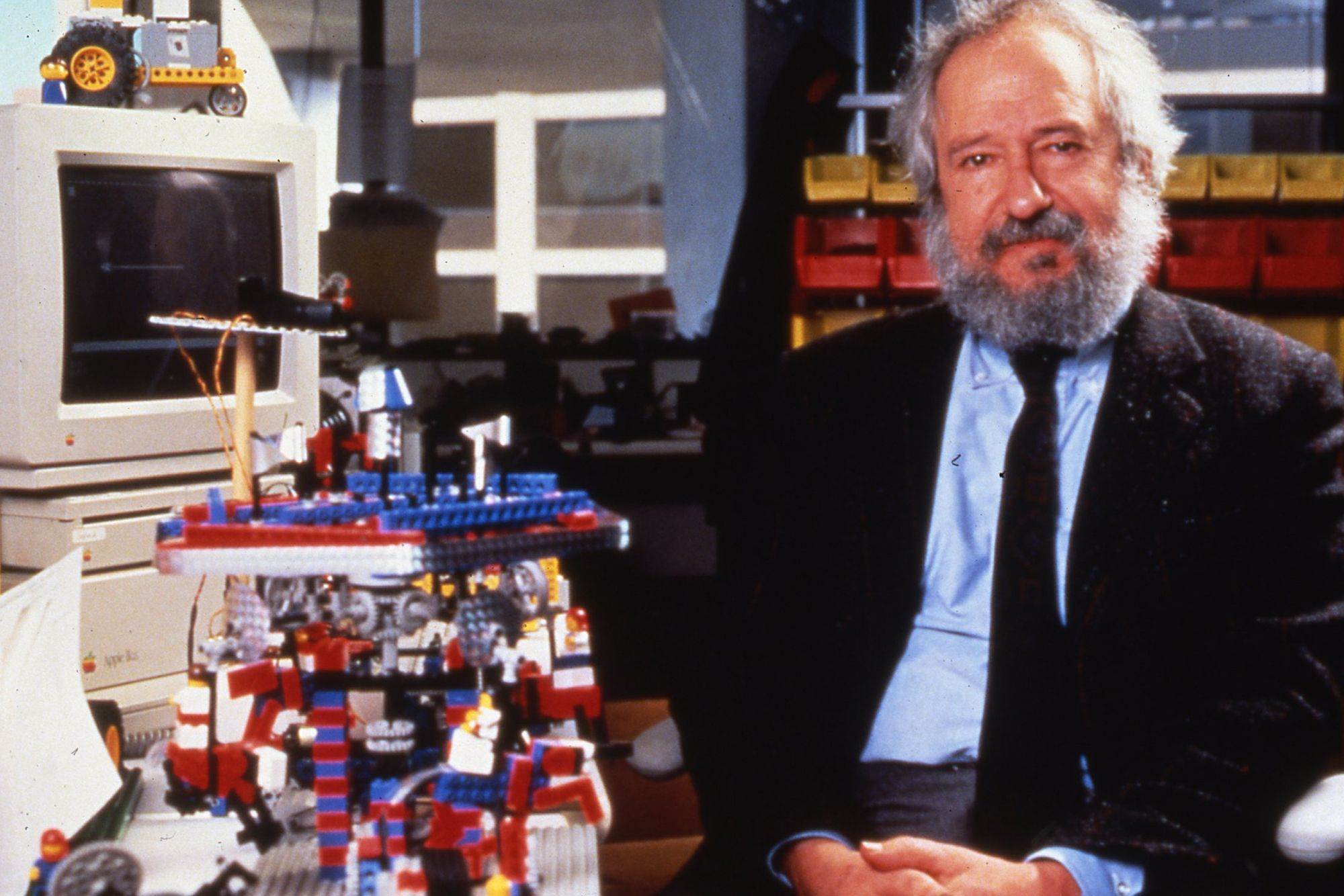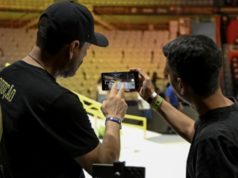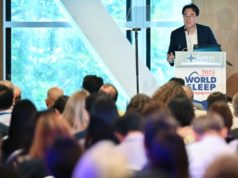
Seymour Papert, whose ideas and inventions transformed how millions of children around the world create and learn, died Sunday at his home in East Blue Hill, Maine. He was 88.
Papert’s career traversed a trio of influential movements: child development, artificial intelligence, and educational technologies. Based on his insights into children’s thinking and learning, Papert recognized that computers could be used not just to deliver information and instruction, but also to empower children to experiment, explore, and express themselves. The central tenet of his Constructionist theory of learning is that people build knowledge most effectively when they are actively engaged in constructing things in the world. As early as 1968, Papert introduced the idea that computer programming and debugging can provide children a way to think about their own thinking and learn about their own learning.
“With a mind of extraordinary range and creativity, Seymour Papert helped revolutionize at least three fields, from the study of how children make sense of the world, to the development of artificial intelligence, to the rich intersection of technology and learning,” says MIT President L. Rafael Reif. “The stamp he left on MIT is profound. Today, as MIT continues to expand its reach and deepen its work in digital learning, I am particularly grateful for Seymour’s groundbreaking vision, and we hope to build on his ideas to open doors to learners of all ages, around the world.”
Papert’s life straddled several continents. He was born in 1928 in Pretoria, South Africa, and went on to study at the University of the Witwatersrand in South Africa, where he earned a BA in philosophy in 1949, followed by a PhD in mathematics three years later. He was a leading anti-apartheid activist throughout his university years.
Papert’s studies then took him overseas – first to Cambridge University in England from 1954-1958, where he focused on math research, earning his second PhD, then to the University of Geneva, where he worked with Swiss philosopher and psychologist Jean Piaget, whose theories about the ways children make sense of the world changed Papert’s view of children and learning.
From Switzerland, Papert came to the U.S., joining MIT as a research associate in 1963. Four years later, he became a professor of applied mathematics, and shortly after was appointed co-director of the Artificial Intelligence Lab (which later evolved into the Computer Science and Artificial Intelligence Laboratory, or CSAIL) by its founding director Professor Marvin Minsky. Together, they wrote the 1969 book, “Perceptrons,” which marked a turning point in the field of artificial intelligence.
In 1985, Papert and Minsky joined former MIT President Jerome Wiesner and MIT Professor Nicholas Negroponte to become founding faculty members of the MIT Media Lab, where Papert led the Epistemology and Learning research group.
“Seymour often talked poetically, sometimes in riddles, like his famed phrase, ‘you cannot think about thinking without thinking about thinking about something,’” says Negroponte, the Media Lab’s co-founder and first director. “He did not follow rules or run by anybody else’s clock. I would say, in Papertian style, Seymour never needed to do what he said because when he said what he did, it was better.”
Seymour Papert, in a 1986 video, discusses computers in schools of the future.
Video: MIT Media Lab
Papert was among the first to recognize the revolutionary potential of computers in education. In the late 1960s, at a time when computers still cost hundreds of thousands of dollars, Papert came up with the idea for Logo, the first programming language for children. Children used Logo to program the movements of a “turtle” — either in the form of a small mechanical robot or a graphic object on the computer screen. In his seminal book “Mindstorms: Children, Computers and Powerful Ideas” (1980), Papert argued against “the computer being used to program the child.” He presented an alternative approach in which “the child programs the computer and, in doing so, both acquires a sense of mastery over a piece of the most modern and powerful technology and establishes an intimate contact with some of the deepest ideas from science, from mathematics, and from the art of intellectual model building.”
In collaboration with Sherry Turkle, the Abby Rockefeller Mauzé Professor of the Social Studies of Science and Technology at MIT, Papert explored how childhood objects have a deep influence on how and what children learn. In “Mindstorms,” Papert explained how he “fell in love with gears” as a child, and how he hoped to “turn computers into instruments flexible enough so that many children can each create for themselves something like what the gears were for me.”
Papert was the Cecil and Ida Green Professor of Education at MIT from 1974-1981. In 1985, he began a long and productive collaboration with the LEGO company, one of the first and largest corporate sponsors of the Media Lab. Papert’s ideas served as an inspiration for the LEGO Mindstorms robotics kit, which was named after his 1980 book. In 1989, the LEGO company endowed a chair at the Media Lab, and Papert became the first LEGO Professor of Learning Research. In 1998, after Papert became professor emeritus, the name of the professorship was modified, in his honor, to the LEGO Papert Professorship of Learning Research. The professorship was passed on to Papert’s former student and long-time collaborator, Mitchel Resnick, who continues to hold the chair today.
“For so many of us, Seymour fundamentally changed the way we think about learning, the way we think about children, and the way we think about technology,” says Resnick, who heads the Media Lab’s Lifelong Kindergarten research group.
In the late 1990s, Papert moved to Maine and continued his work with young people there, establishing the Learning Barn and the Seymour Papert Institute in 1999. He also set up a Learning Lab at the Maine Youth Center, where he worked to engage and inspire troubled youths who had received little support at home or school, and were grappling with drugs, alcohol, anger, or psychological problems. He was also integral to a Maine initiative requiring laptops for all 7th and 8th graders. Following the Maine initiative, Papert joined Negroponte and Alan Kay in 2004 to create the non-profit One Laptop per Child (OLPC), which produced and distributed low-cost, low-power, rugged laptops to the world’s poorest children. The organization produced more than 3 million laptops, reaching children in more than 40 countries. “Each of the laptops has Seymour inside,” says Negroponte.
Papert’s work inspired generations of educators and researchers around the world. He received numerous awards, including a Guggenheim fellowship in 1980, a Marconi International fellowship in 1981, and the Smithsonian Award from Computerworld in 1997. In 2001, Newsweek named him “one of the nation’s 10 top innovators in education.”
“Papert made everyone around him smarter — from children to colleagues — by encouraging people to focus on the big picture and zero in on the powerful ideas,” says CSAIL’s Patrick Winston, who took over as director of the AI Lab in 1972.
In addition to “Mindstorms,” Papert was the author of “The Children’s Machine” (1993) and “The Connected Family: Bridging the Digital Generation Gap” (1996). As an emeritus professor, Papert continued to write many articles and advise governments around the world on technology-based education. In 2006, while in Vietnam for a conference on mathematics education, he suffered a serious brain injury when struck by a motor scooter in Hanoi.
Papert is survived by his wife of 24 years, Suzanne Massie, a Russia scholar with whom he collaborated on the Learning Barn and many international projects; his daughter, Artemis Papert; three stepchildren, Robert Massie IV, Susanna Massie Thomas, and Elizabeth Massie; and two siblings, Alan Papert and Joan Papert. He was previously married to Dona Strauss, Androula Christofides Henriques, and Sherry Turkle.
The Media Lab will host a celebration of the life and work of Seymour Papert in the coming months.


![[World Alzheimer’s Day] Samsung Research Advances Early](https://loginby.com/itnews/wp-content/uploads/2025/09/1758375215_World-Alzheimer’s-Day-Samsung-Research-Advances-Early-238x178.jpg)




